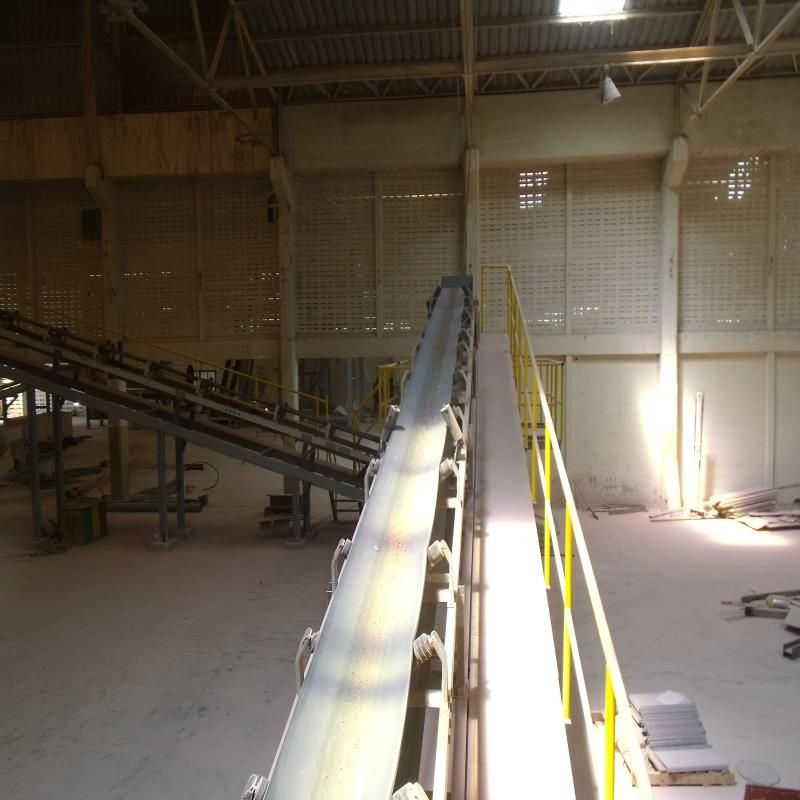- +8618937185591
- +8618937185591
- ec19@zkcorp.com
- +8618937185591


I. Loading device
The structure of the belt conveyor loading device depends on the nature and loading mode of the special materials to be transported. For the finished articles, the articles can be directly loaded on the conveyor belt by using chute or skateboard; For the scattered materials, the funnel can be used for loading, and the funnel is fixed on the rack of the loading position or installed on the operable trolley to change the loading position.
During loading, due to the impact of materials, it has a great impact on the life of conveyor belt. Although buffer idler is used at the loading place, conveyor belt and idler are still subject to relatively large impact force. In order to reduce this kind of impact as much as possible, the following requirements are often put forward for the loading device:
When loading, use buffer plate, chute and other devices to make the direction of material flow and the speed of material flow as consistent as possible.
Evenly feeding. For impact feeding (such as electric shovel, grab and other feeding), it should be buffered by funnel or silo first, and then the materials can flow evenly to the conveyor belt.
The feeding drop should be small to reduce the impact energy.
2. Unloading device
There are two ways to unload the belt conveyor: end unloading and halfway unloading.
1. When the end of the belt conveyor is unloaded, the materials are thrown away from the roller due to inertia. Therefore, a shield and a unloading funnel with appropriate shapes should be installed to collect the materials and prevent dust. The shape and installation position of the shield and unloading funnel should be suitable for the throwing track of the material, and the impact between the material and the bucket should be reduced as much as possible to reduce the abrasion of the bucket wall.
2. There are two most commonly used types of belt conveyor unloading: plow-type discharger and unloading trolley.
(1) plow-type discharger
Plow-type unloading device is a kind of unloading baffle which is at a certain angle to the movement direction of the belt. When the running material touches the baffle, it is pushed to the side of the baffle to unload. Plow-type discharger can be divided into one-side discharge and two-side discharge according to the discharge mode.
The advantages of plow-type unloader are: small height, simple structure, light weight and low cost. The disadvantage is that the conveyor belt is seriously worn. Therefore, for longer conveyors, it is not suitable to use materials with large conveying block and serious abrasion.
Plow-type unloading device is only suitable for unloading at Yu Ping-shaped tape. If it is trough-shaped tape, flat roller or unloading plate should be installed at the unloading place. When selecting plough-type discharger, the adhesive tape should adopt vulcanized joint, and the belt speed should not exceed 2 m/s.
(2) unloading truck
The unloading truck is a double-roller unloading device installed on a four-wheel frame. Firstly, the adhesive tape is raised under the action of the inclined roller table on the trolley. When the object passes through the upper roller, it is thrown away from the roller under the action of inertia, and is unloaded into the hopper through the shield and the feeding groove. However, after the action of the lower roller, the adhesive tape returns to the roller table on the rack to complete the unloading operation.
Unloading trucks are divided into two types: General Electric unloading trucks and heavy electric unloading trucks. The electric unloading truck can carry the load back and forth to adapt to unloading materials at any place along the length of the conveyor.